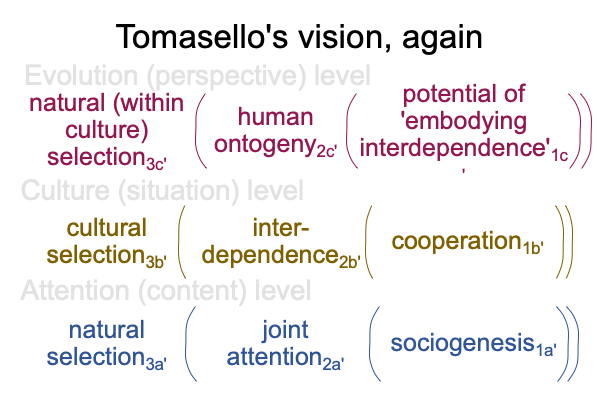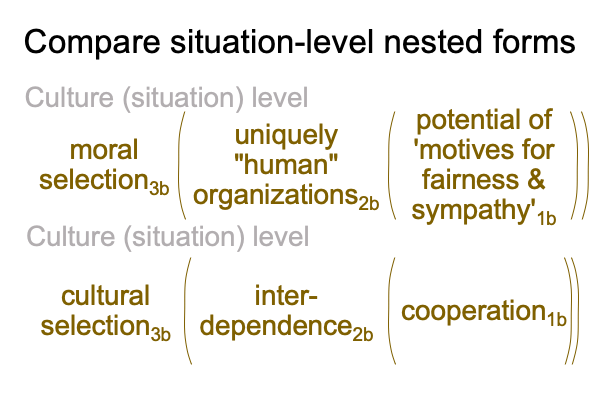0397 Tomasello’s book opens with a hypothesis. Interpendence2 emerges from (and situates) cooperation1. In terms of Tomasello’s vision, interdependence2 replaces human culture2b and cooperation1b virtually situates joint-attention2a as an adaptation to sociogenesis1a. Cooperation1b may be defined as the potential of joint- and collective-attention2a.

0398 Of course, the other option is to consider cooperation2b as an actuality and interdependence1b as a possibility.
The option that I offer captures Tomasello’s claim that there are two forms to cooperation: mutualistic collaboration andaltruistic helping. Classical philosophers discuss these two forms in terms of motives. Mutualistic collaboration harbors a motive for justice (that is, the right, as in “righteous”). Altruistic helping carries a motive for beneficence (that is, the good). Yes, philosophers distinguish fairness from sympathy. Each exhibits is own style of morality, where morality associates with the possibility of what is righteous and good1b.
0399 So, why say that cooperation1b is the potential1b of joint attention2a?
Joint attention2a holds the potential of justice and beneficence, the motives for cooperations1b.
Plus, moral dilemmas reside in the way that interdependence2b, the actuality emerging from (and situating) cooperation1b, plays out.
0400 Remember, the sociogenesis1a of teams entails competition (each member of the team is selected by all others) for the honor of cooperating (that is, manifesting the potential of joint attention2a).
Hominins compete to cooperate.
Morality plays roles in both competition and cooperation.
Ah, that must mean that morality is embedded in cultural selection3b.
0400 Tomasello intends to provide an evolutionary account for the natural history of human morality3b, as the normal context for unique forms of social interaction and organization of the Homo genus2b (that is, interdependence2b), emerging from the cultivation of fairness and sympathy1b (that is, cooperation1b).
Here are two pictures of one situation-level nested form.

